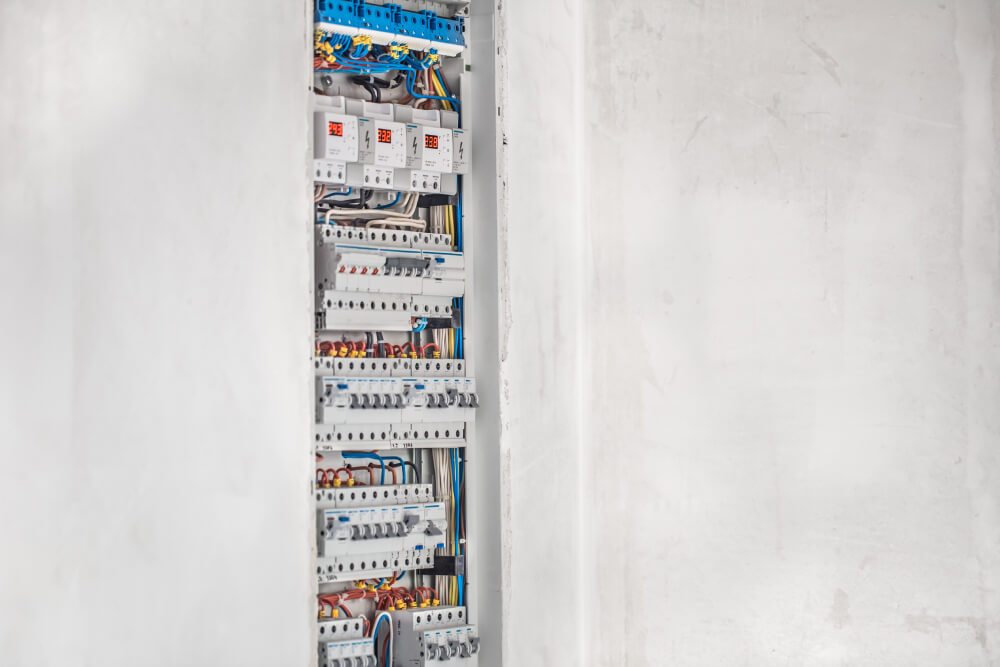Introduction
As modern homes evolve, so do their energy requirements. Today, homeowners rely on a wide array of devices, appliances, and smart technology to support their lifestyles. However, many houses—especially older ones—are not equipped to handle the increased demand placed on their electrical systems. If your home has an outdated electrical panel, it could pose a significant safety hazard, making it crucial to upgrade your panel to meet today’s standards. In this guide, we’ll explore why an electrical panel upgrade is essential, how to recognize the signs that your panel may need an upgrade, and what to expect during the process.
Understanding Electrical Panels and Their Role
A key part of the power distribution system in your house is the electrical panel, sometimes referred to as a breaker box. Electricity from the grid enters your house through this box, which is then split up into circuits that power different areas of your house. In order to prevent surges, short circuits, or electrical fires, the panel has breakers (or fuses in previous models) that control power flow. The breaker protects a circuit from damage by cutting off electricity when it is overloaded. Even though the purpose of this system is to protect your house, it loses some of its effectiveness if the panel is old or overloaded.
The Dangers of an Outdated Electrical Panel
From annoying power outages to major safety risks, an old or small electrical panel can cause many problems. The lower amperage capacities of older panels may not be enough to meet the energy-intensive requirements of modern appliances and gadgets. Problems with overloaded panels might include overheating, which can damage breakers and wires, or even sparking, which can start a fire. Older panels are also more susceptible to electrical risks since they could not have built-in safety features.
Why You Should Consider a Panel Upgrade
1. An Increase in Home Security
An old panel increases the potential of electrical hazards such as fires, burns, and shocks in your house. By guaranteeing that your home’s electrical system is secure and complies with contemporary safety regulations, a panel upgrade offers piece of mind.
2. Providing for Growing Power Requirements
More electricity is needed now than ever before for modern lifestyles. Your current panel might not be able to handle the extra load if you’ve recently finished remodeling, added big appliances, or switched to energy-intensive gadgets like electric cars. Upgrading guarantees that you may operate several systems and appliances at once without triggering breakers.
3. Increased Cost Savings and Energy Efficiency
Older panels might demand more electricity than needed and are frequently inefficient, which raises utility costs. Upgrading guarantees that the electrical distribution in your house is optimized, which could result in cheaper monthly energy bills and a smaller carbon footprint.
4. Increased Home Appeal and Value
Homebuyers find a fresh, updated electrical panel appealing since it demonstrates that the house is prepared to safely accommodate contemporary equipment and technologies. Upgraded electrical systems increase a home’s value, so if you want to sell, the investment will be justified.
5. Future-Proofing Renewable Energy and Smart Home Technology
Many homeowners are choosing higher-capacity panels to meet future demands as smart houses, solar panels, and electric cars become more popular. As your energy needs increase over the next few years, an upgrade to your panels guarantees that you won’t have to replace your system.
Signs Your Electrical Panel May Need an Upgrade
Your home’s electrical panel often gives clues when it’s time for an upgrade. Look for these key signs:
- Regular Breaker Trips or Blown Fuses: Your panel may be having trouble keeping up with demand, which means it’s time for an upgrade, if you’re frequently changing fuses or resetting breakers.
- Lights flickering or dimming: If your lights flicker or dim when other appliances are using them, it could be a sign that your panel isn’t able to provide steady power to all circuits.
- Scorched Marks or Burning Odor: Get in touch with an electrician right once if you detect scorch marks on or near the panel, or if you smell a burning smell. These can indicate internal damage or overheating.
- Low Amperage Older Panel: Panels constructed 20–30 years ago usually have lower capacity, usually ranging from 60 to 100 amps, which would not be sufficient to satisfy the needs of contemporary homes.
- Fuse-Based Panel: In general, homes with contemporary breaker panels are safer than those with fuse boxes. Changing to a breaker panel with enough capacity improves usefulness and safety.
What to Expect During an Electrical Panel Upgrade
Upgrading your electrical panel is a job that requires a licensed electrician. Here’s an overview of what to expect:
- Initial Assessment: To choose the ideal kind and size for your upgrade, the electrician will first evaluate the energy requirements of your house and examine your current panel.
- Inspections and Permits: To guarantee that the improvement complies with local building rules, electrical work typically necessitates permits. This will be taken care of by the electrician, who will also arrange for any required inspections.
- Panel Installation: To make sure everything is linked correctly, the electrician will uninstall the old panel, install a new one, and rewire circuits as necessary. While the new panel is being fitted, you might have to anticipate going without power for a few hours.
-
Safety Testing: To make sure everything is operating properly and safely, the electrician will perform safety tests when the new panel is installed.
-
Inspection by Authorities: To guarantee adherence to safety regulations, a city inspector must often authorize the job.

